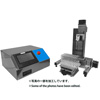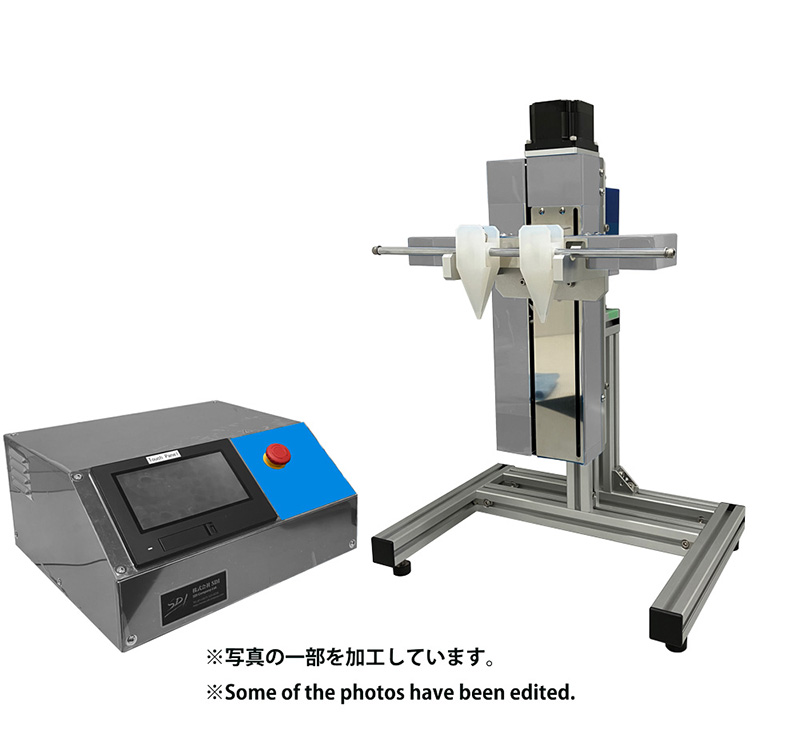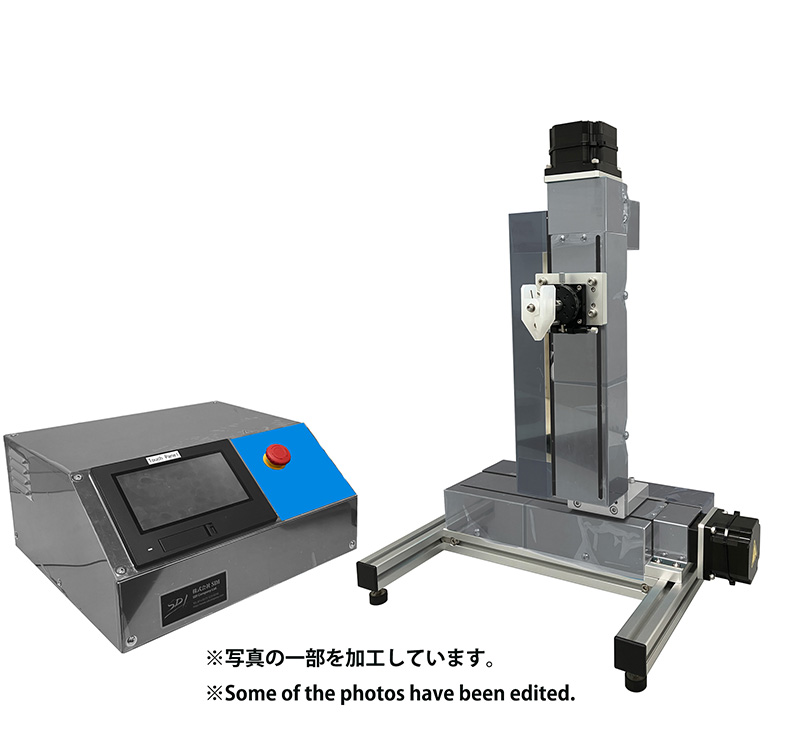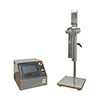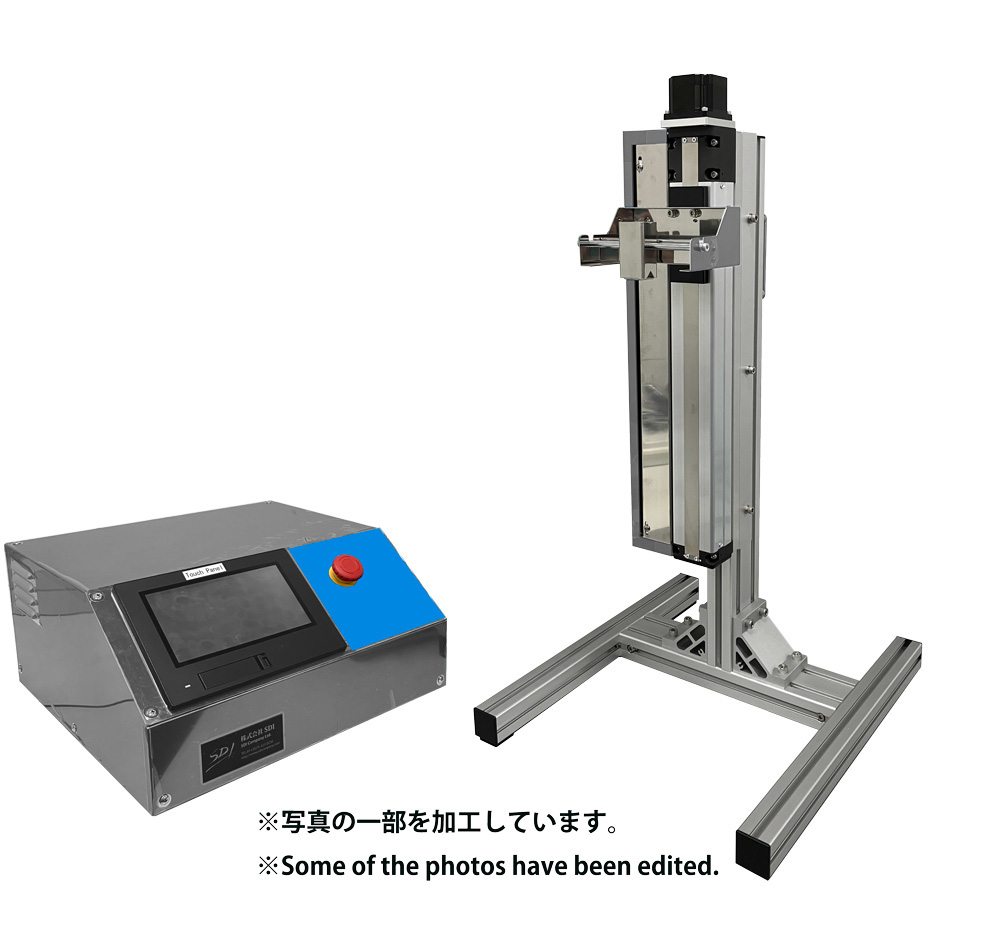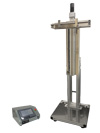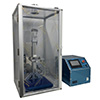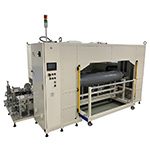Machine Translated by Google
Deposition state and control of submicron silica particles on silicon substrate by dip coating method
Shibaura Institute of Technology, Department of Electrical Engineering
Akira Harao, Seiichiro Inai, Hiroyuki Nishikawa
1. Research background
Silica is chemically stable and has excellent optical properties, making it an ideal material for photonics.In particular, submicron silica particles with a particle size of several hundred nanometers can be synthesized by the Stöber method.
This makes it possible to produce particles with uniform particle size, and they form periodic structures through self-organization, which is expected to be useful for photonics.
Examples of applications include the creation of silica crystals. Methods for forming array structures of submicron silica particles on a substrate include: The meniscus method, which uses the evaporation of a colloidal solution, is one example, but it is necessary to pay attention to controlling the evaporation rate.
In this experiment, the dip coating method was used, which allows precise control of the pulling speed.
2. Experimental Method
Monodisperse silica particles with a particle size of 500 nm were prepared from tetraethoxysilane by the Stöber method and dissolved in pure water.A colloidal solution was prepared by dispersing the powder. Colloidal solutions tend to precipitate over time, so the solution was designed to prevent this.
To achieve this, convection was induced by using a device that heated the bottom with a heater while cooling the colloid surface with a cooling tube.
Using a water-treated silicon substrate, a dip-coater (Nano Dip Coater ND-0407 [Corporation The speed was controlled by the SDI (Spin Drain Induction) under the following conditions:
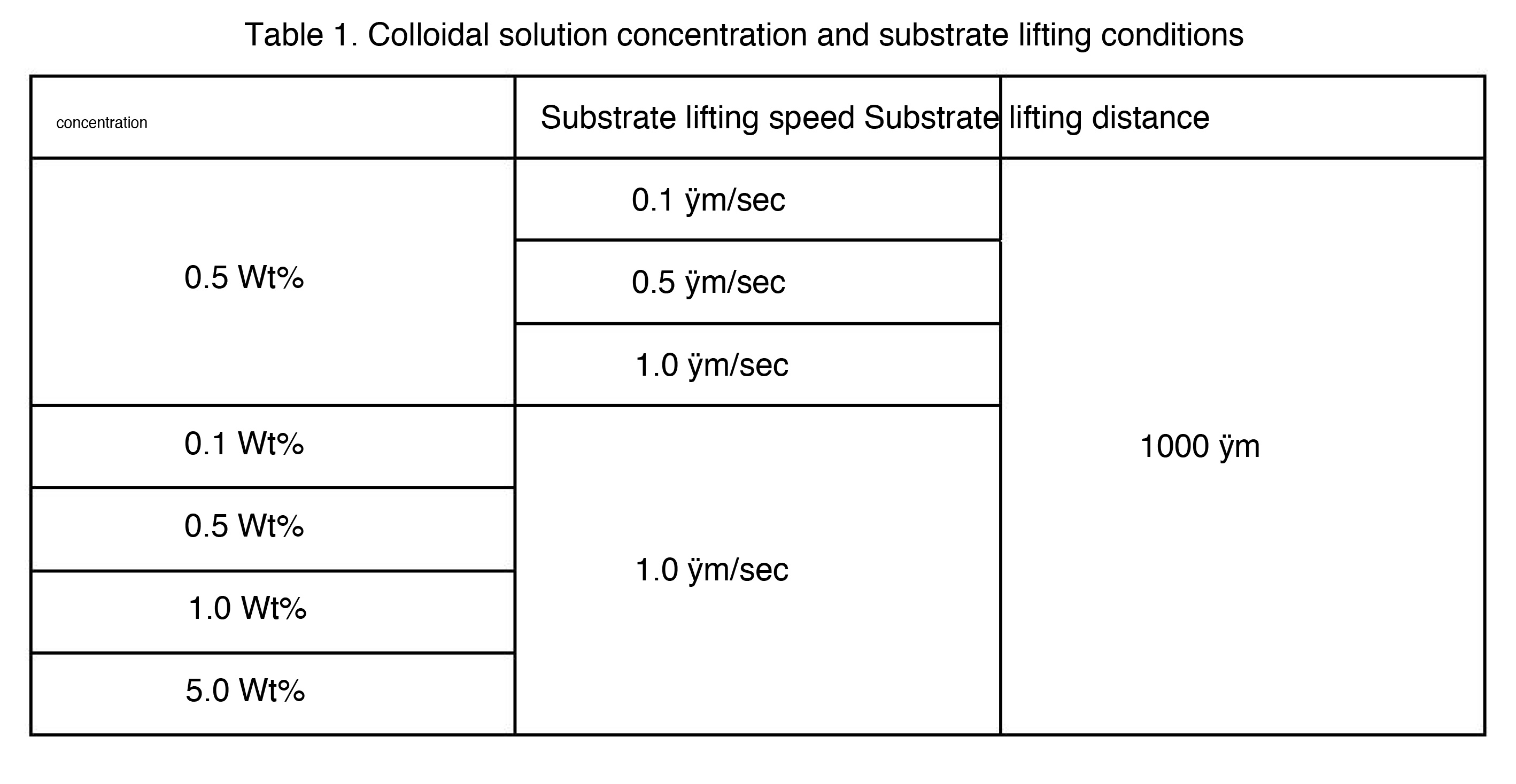
3. Results and Discussion
The arrangement of the fine particles on the deposited substrate was observed using a scanning electron microscope (SEM) (measurement magnification: 14,000 Magnification: 14ÿm×10ÿm. The SEM image is shown below.As shown in Fig. 1(a)-(c), the grains collapse and depletion occur as the pulling rate decreases.
As a result, the arrangements formed in (b) and (c) were almost close-packed.
The concentration dependence of the colloidal solution shown in Figure 2(a) to (d) indicates that the higher the concentration, the denser the array formed.
At a concentration of 5.0 Wt%, a multilayer structure was formed. This is because the more particles there were in the colloidal solution, the more easily they adhered to the substrate.
This is because the supply of particles to the substrate increases.
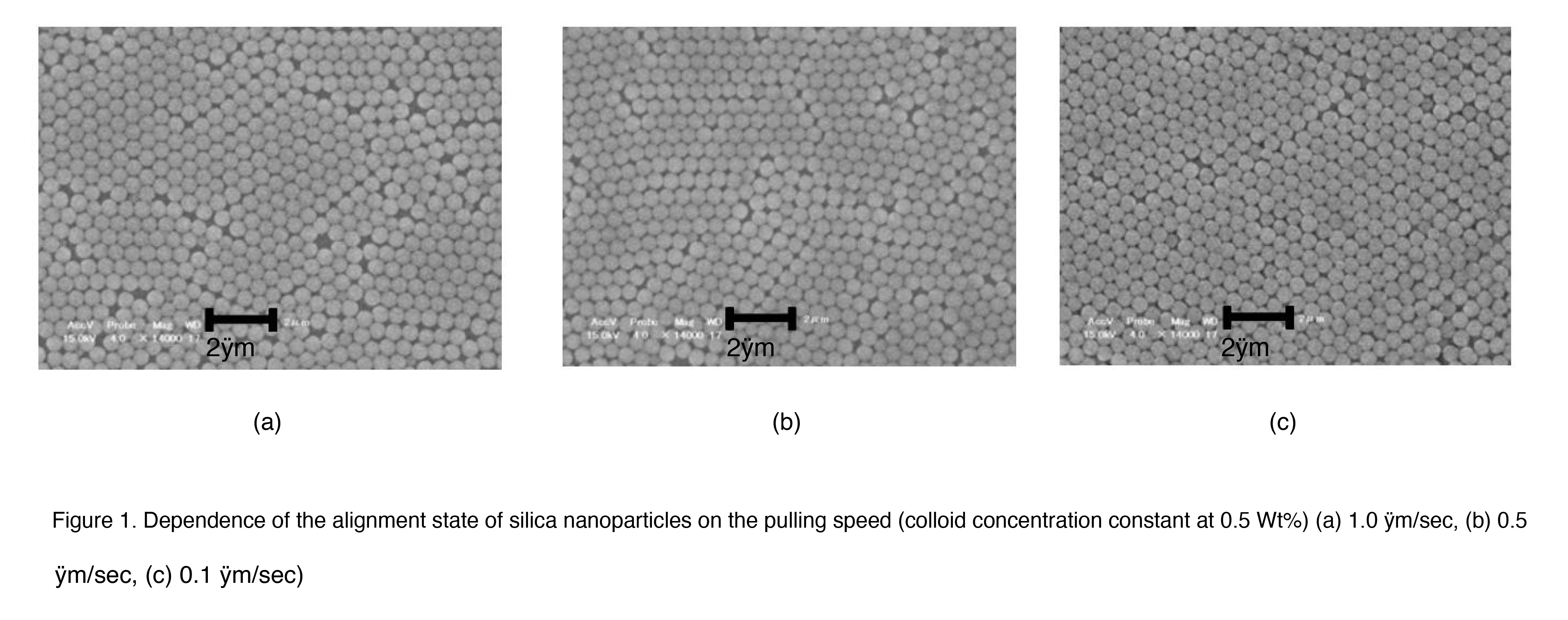
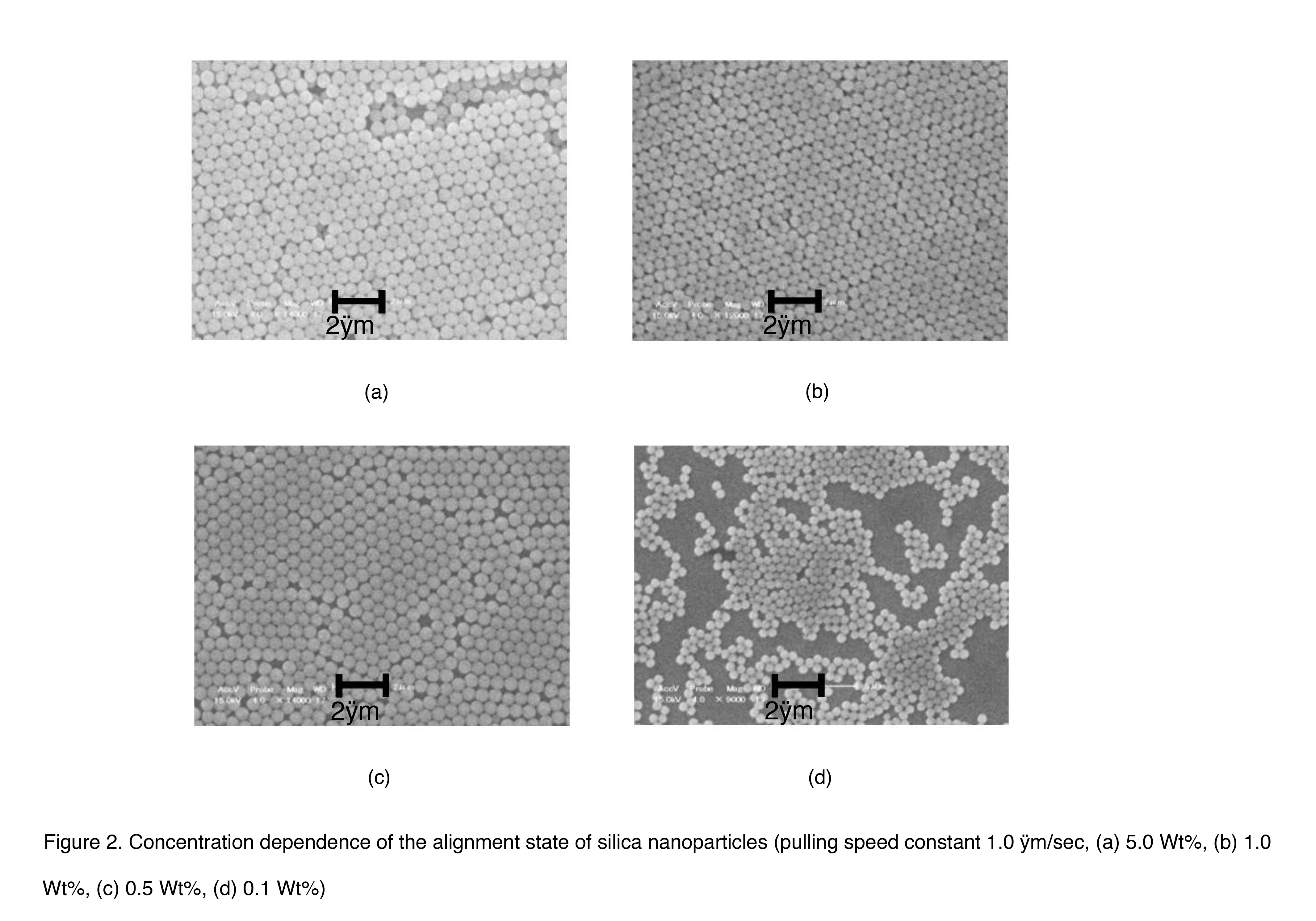
4. Summary
In the fabrication of periodic structures in nanoparticle arrays, the decrease in the substrate pulling speed and the increase in colloid concentration It was revealed that the application of the nano-dip control enabled the dense arrangement of submicron silica particles.By precisely controlling the pulling speed using a pull-up device, it is possible to produce a uniform thin film of submicron silica particles.
In the future, we plan to use silica particles with periodic structures in deposition using a nano dip coater.
We consider the conditions for creating three-dimensional structures.
 Japanease
Japanease English
English






